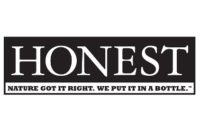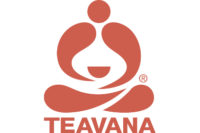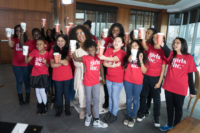Consumers find favor with tea's healthy attributes
RTD tea segment expands to include liquid concentrates


Blended teas are an item of interest for consumers, Euromonitor’s Dana LaMendola says. Numi Organic Tea introduced its Indulgent Tea line, which amalgamates tea and cacao. (Image courtesy of Numi Organic Tea)


As part of Lipton’s “Be More Tea” campaign, Lipton Iced Tea developed a three-part comedic film series featuring new brand personalities Carl and Stu, two Lipton Iced Tea deliverymen who embody the playful and thoughtful sides of the campaign, the company says. Actress Kristen Bell served as creative director. (Image courtesy of PepsiCo Inc. and Unilever)








The old saying goes, “An apple a day keeps the doctor away,” but consumers also are turning to beverages such as tea to support their health. “Tea is increasingly positioned as a functional beverage, a drink that is not only better for you than other beverages, but also as a drink that can do something for you, whether it be [to] help you sleep, digestive help, etc.,” says Dana LaMendola, beverages analyst with Euromonitor International, Chicago.
| Jump to: |
LaMendola notes that health and wellness trends — as well as consumer education — have supported increased consumption in the U.S. hot tea market. The same could be said for U.S. ready-to-drink (RTD) tea, which has increased in both volume and dollar sales from 2008 to 2013, she adds.
Hester Joen, industry analyst for Santa Monica, Calif.-based IBISWorld, also notes the impact health and wellness has had on the tea category. “The growing popularity of antioxidants among consumers and interest in youth-preserving products among baby boomers are some trends that have supported tea consumption,” he says.
The market research firm also noted in its January report “Tea Production in the US” that the category is benefiting from consumer emphasis on healthy living habits and brand owners capitalizing on this trend.
“Backed by the scientific community, tea manufacturers are marketing the various health benefits of tea consumption, such as its effect on lowering cholesterol,” the report states. “Additionally, as Americans become more health conscious, they will seek alternatives to sugar-rich, carbonated beverages.”
Brand owners also are enlisting their own campaigns to generate more buzz about tea. For instance, Englewood Cliffs, N.J.-based Unilever USA launched the “Be More Tea” campaign for its Lipton brand to encourage people to snap out of their routines and embrace each day with a more present, playful and thoughtful mindset, the company says. The first venture was a 60-second TV spot featuring the Muppet characters in anticipation of the movie “Muppets Most Wanted.”
“We live in a busy world,” said Alfie Vivian, vice president of refreshments for Unilever, in a statement. “It’s easy to slip into a routine with our heads down, moving from one place or obligation to the next. Lipton wants to inspire consumers to look up, take in all that life has to offer, and enjoy what you may have otherwise missed. This is what ‘Be More Tea’ means to Lipton, and [that's] the philosophy we will bring to life in our new national ad campaign starring the Muppets.”
Bagging sales
Whether for its health benefits or other characteristics, U.S. tea sales have reflected this growing interest from consumers, experts note.
“The tea market in the United States is still in the growth stage of its lifecycle,” Joen says. “While the growth of the tea production industry has decelerated considerably over the past decade, its revenue has moderately increased over the past five years.”
Euromonitor’s LaMendola notes that although the U.S. hot tea market of loose-leaf and packaged, bagged tea was stable for the review period of 2008-2013, the market showed a positive increase in retail volume growth in 2013 for the first time since 2010.
“The tea market in the United States is still in the growth stage of its lifecycle." |
For the 52 weeks ending March 23, bagged and loose-leaf tea sales were up 6.6 percent, totaling more than $1.2 billion, and unit sales were up roughly 2 percent in U.S. supermarkets, drug stores, mass merchandisers, gas and convenience stores, military commissaries, and select club and dollar retail chains, according to Information Resources Inc. (IRI), Chicago.
Although IRI tracks loose-leaf and bagged tea in one category segment, analysts are noticing trends calling out the two formats’ differences when it comes to sales. IBISWorld’s Joen notes that tea bags account for the majority of the market, but this format has seen its market share decline compared with loose-leaf tea.
“The consumption of loose-leaf tea has grown on the back of the growing popularity of specialty tea and coffee shops,” Joen says.
This spring, Seattle-based Starbucks Coffee Co. and Oprah Winfrey collaborated to co-create Teavana Oprah Chai Tea. The tea blends cinnamon, ginger, cardamom and cloves with loose-leaf black tea and rooibos. In addition to a foodservice offering, Teavana Oprah Chai Tea loose-leaf tea is available in reusable storage tins at participating Starbucks stores and as scooped loose-leaf tea at Teavana stores.
Euromonitor’s LaMendola also has noticed growth for black loose-leaf teas in both volume and value for 2012-2013, but she cautions about the interpretation of this data. “This segment is benefiting from the premium image associated with loose-leaf tea and increased consumer awareness and education regarding tea preparation,” she says. “However, it is important to note that loose-leaf tea remains a niche product. Euromonitor only breaks out loose black teas, which in 2013 accounted for 15 percent of the overall black tea market in retail value terms.”
In addition to loose-leaf formats, black tea varietals are employing other methods to appeal to consumers. “In black tea, the trend is toward more specialty teas [or] estate teas, [such as] Darjeeling, Ceylon or blends like Earl Grey,” LaMendola says. “In 2013, black specialty teas recorded the strongest growth of any tea type. As consumers become more familiar with tea, they are looking for more interesting blends. Specialty tea shops have done a good job at promoting different blends.”
Capitalizing on the blend trend, Oakland, Calif.-based Numi Organic Tea introduced its Indulgent Tea line this spring. A new collection of chocolate teas, Numi’s Indulgent Teas amalgamate tea and cacao in four varieties: Chocolate Rooibos, Chocolate Mint, Chocolate Earl Grey and Chocolate Spice.
“Since we launched our Chocolate Pu-erh Tea in 2008, it has increased in popularity every year,” said Ahmed Rahim, chief executive officer and chief alchemist for Numi Organic Tea, in a statement. “Now we are pleased to introduce our Indulgent Teas, combining some of our top-selling tea blends with cacao to offer unique tastes for every palate within the ever-growing chocolate tea category.”
Euromonitor’s LaMendola notes that within green tea, niche products like matcha green tea have grown in popularity and even have popped up at foodservice locations.
But these specific varietals aren't the only teas gaining traction, experts note. “Herbal and white teas have also grown in popularity in recent years,” IBISWorld’s Joen says. “Herbal teas appeal to drinkers who are looking for a refreshing beverage, while white teas appeal to drinkers who want a lightly caffeinated beverage. A relatively new product, yerba mate, has experienced substantial growth in recent years, as its caffeine content is closer to that of coffee. Also, yerba mate has high antioxidant content.”
Euromonitor’s LaMendola adds that “other teas” — defined by Euromonitor as rooibos, oolong, white, pu’erh as well as other varietals — was the fastest-growing segment for the U.S. hot tea category between 2008 and 2013. Sales increased 145 percent in retail volume and 207 percent in retail value during that time period to reach $211 million in sales in 2013, she says.
“Although ‘other teas’ includes teas with very different flavor profiles, from the fermented profile of pu’erh tea to the mild, roasted flavor of oolong, they are alike in that all evoke complex flavors that are largely unfamiliar to U.S. palates,” LaMendola says. “Consequently, ‘other tea’ offers U.S. consumers the nuanced and complex flavors that they are increasingly looking for.”
Conveniently refreshing
Even though the “other teas” segment has made gains within the hot tea category, these varietals also are making a push within the RTD format.
For example, Rooibee Red Tea, Louisville, Ky., recently unveiled its kids drink line: Rooibee Roo. Like its parent line, Rooibee Roo is a ready-to-drink red tea made from the South African rooibos bush. It also is certified organic by the U.S. Department of Agriculture (USDA). It will be available in three flavors: Cherry, Mango and Orange. The teas are sweetened with organic cane sugar with one bottle containing 12 grams of sugar.
Similar to bagged and loose-leaf tea, RTD tea has benefited from consumer perceptions about tea relating to health and wellness, experts note.
“RTD has experienced robust growth in recent years as soda drinkers opted for healthier RTD beverages,” IBISWorld’s Joen explains.
However, because of consumer concerns about sugar and obesity, not all RTD tea is viewed as an option. “Products like Honest Tea and Gold Peak, which are viewed as more natural and less sweet than traditional RTD tea brands, are benefiting from this trend,” Euromonitor's LaMendola says. Both within Atlanta-based The Coca-Cola Co.’s brand family, Gold Peak sales were up 12 percent to $138 million, and Honest Tea sales increased 13 percent to $36 million in the 52 weeks ending March 23 in U.S. multi-outlets, IRI reports.
In November, Honest Tea announced it was expanding its zero-calorie beverage portfolio with the national rollout of Unsweet Lemon Tea. Brewed with USDA-certified organic, Fair Trade Certified tea leaves from India, the unsweetened beverage is flavored with organic lemon extract and is available in 16.9-ounce PET bottles.
“We worked hard to create an unsweetened tea with a smooth and easily accessible taste profile that Unsweet Lemon Tea delivers,” said Seth Goldman, co-founder and TeaEO of Honest Tea, in a statement. “We hope this new variety will resonate with consumers as they seek out more zero-calorie beverages.”
The segment also has seen strong gains from the Pepsi Lipton Tea Partnership, a joint venture between Purchase, N.Y.-based PepsiCo Inc. and London-based Unilever. The portfolio accounts for nearly 38 percent of the RTD tea segment, making it the sub-category leader, and saw sales increase 8 percent to $1.1 billion in the 52 weeks ending March 23, according to IRI data.
For the RTD arm of Lipton’s previously mentioned “Be More Tea” campaign, Lipton Iced Tea developed a three-part comedic film series featuring new brand personalities Carl and Stu, two Lipton Iced Tea deliverymen who embody the playful and thoughtful sides of the campaign, the company says. The series follows Carl and Stu through a variety of comical situations as they take on people‘s “have-to-do lists,” giving them extra time for their “want-to-do lists,” it adds. Actress Kristen Bell also partnered with the brand for the series, serving as creative director.
Future formats
Although bagged/loose-leaf tea and RTD tea make up the majority of the market in terms of dollar sales, consumers also are turning to other formats for their tea purchases. For instance, refrigerated tea sales increased just more than 5 percent to $890 million in the 52 weeks ending March 23, based on IRI data. However, not all segments fared as well within the tea category.
Instant tea drink mix sales were down just shy of 9 percent for $398 million in sales. Analysts theorize that there could be a handful of contributing factors for this decline.
“The demand for instant, powdered tea has declined due to growing health concerns regarding artificial ingredients,” IBISWorld’s Joen says.
Joen adds that the increasing popularity of liquid concentrates could impact the instant segment, but overall the effect on the category has been minimal. “Consequently, liquid concentrates provide convenience to consumers who regularly consume iced tea,” Joen says. “While liquid tea concentrates have grown slightly in popularity, their impact on other tea segments has been minimal. Furthermore, this format has most likely exacerbated the decline of the instant tea category, as liquid concentrates most closely resemble the iced tea mix format.”
Euromonitor’s LaMendola adds that tea-flavored water enhancers could have an impact within the on-premise channel and notes that it also could infringe upon RTD sales. However, they wouldn’t affect bagged and loose-leaf tea consumers who want the traditional tea drinking experience, she says.
Another emerging format for tea is the single-serve pods segment. Already established for the coffee category, single-serve formats remain a smaller sub-category for tea.
“Right now, single-serve teas serve primarily as an entry point into the category for non-tea drinkers,” LaMendola says. “Consumers purchase single-serve machines pretty exclusively to satisfy their coffee needs. Tea pods are consequently being purchased in addition to coffee pods so that consumers can have a variety of options at home.
“Nevertheless, the convenient format of pods may attract consumers that were previously unlikely to make tea,” she adds. “Tea pods are still a very niche product in the U.S., with sales accounting for just 5 percent of the overall U.S. tea market in 2013. It’s too soon to tell how much impact they will have on other tea segments; however, I think it’s safe to say that they are a gateway for non-tea drinkers.”
Redco Foods Inc., Little Falls, N.Y., has taken notice of both of these segments. Last fall, the company’s Red Rose Tea brand launched a line of Red Rose Energy Teas in single-serve cups. Available in French Vanilla and Hazelnut flavors, the black teas are enhanced with caffeine, providing 60 mg of caffeine versus the typical 40 mg of caffeine in tea, the company says. It followed up that launch shortly after with Red Rose liquid concentrates. Made from pure black tea leaves with no dyes or artificial coloring, Red Rose Real Tea liquid concentrates are available in Black Tea, Earl Grey and Blackcurrant Raspberry varieties. Lightly sweetened with cane sugar and sucralose, each serving contains 5 calories.
Large players also have developed tea and tea-flavored concentrates. AriZona Beverage Co., Cincinnati, developed a line that contains both tea and fruit flavors, and Nestlé Waters North America, Stamford, Conn., released Nestea Liquid Water Enhancers in Iced Tea with Lemon, Iced Tea with Peach, Half & Half Iced Tea, and Green Tea with Citrus varieties.
Looking for a reprint of this article?
From high-res PDFs to custom plaques, order your copy today!












